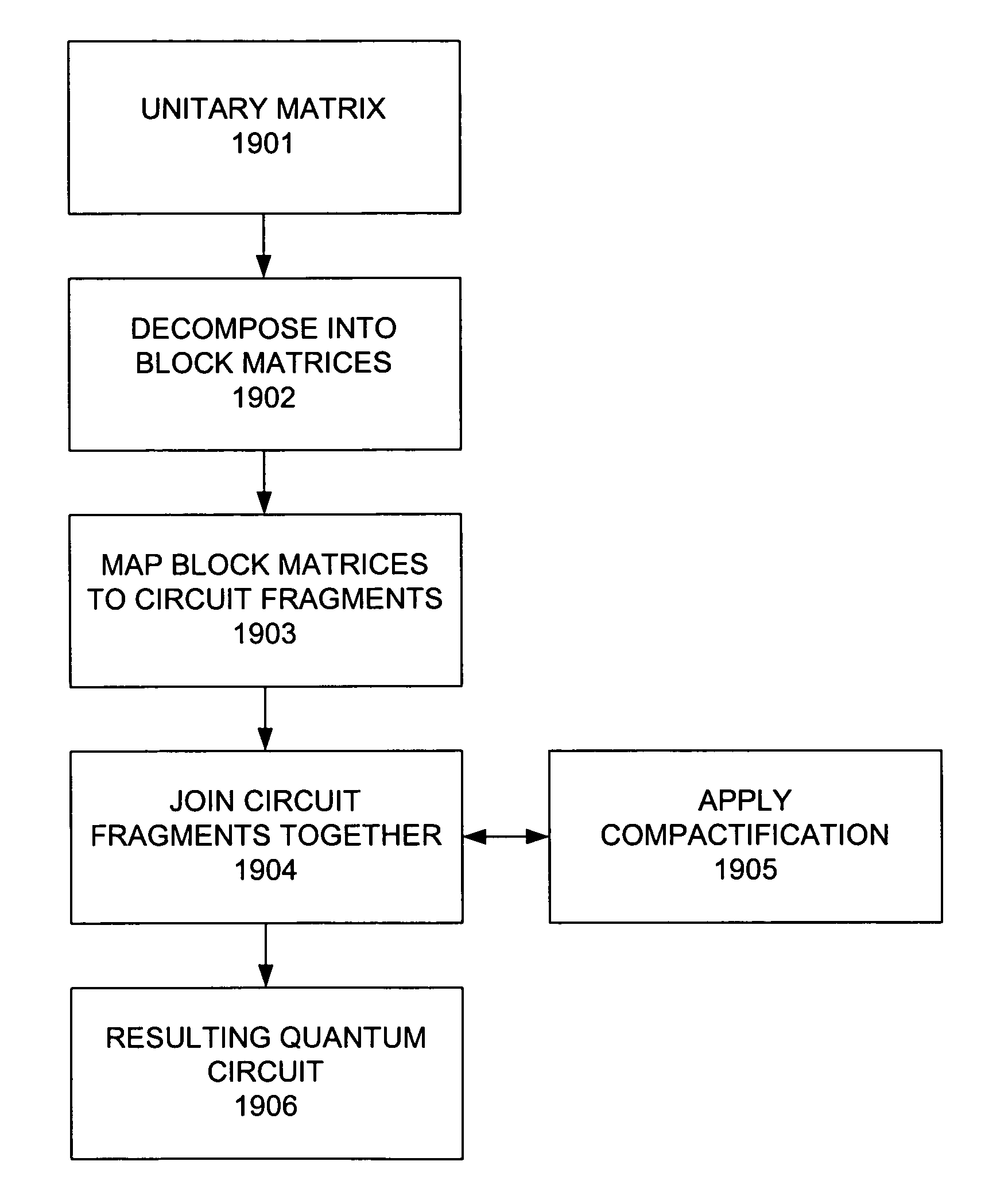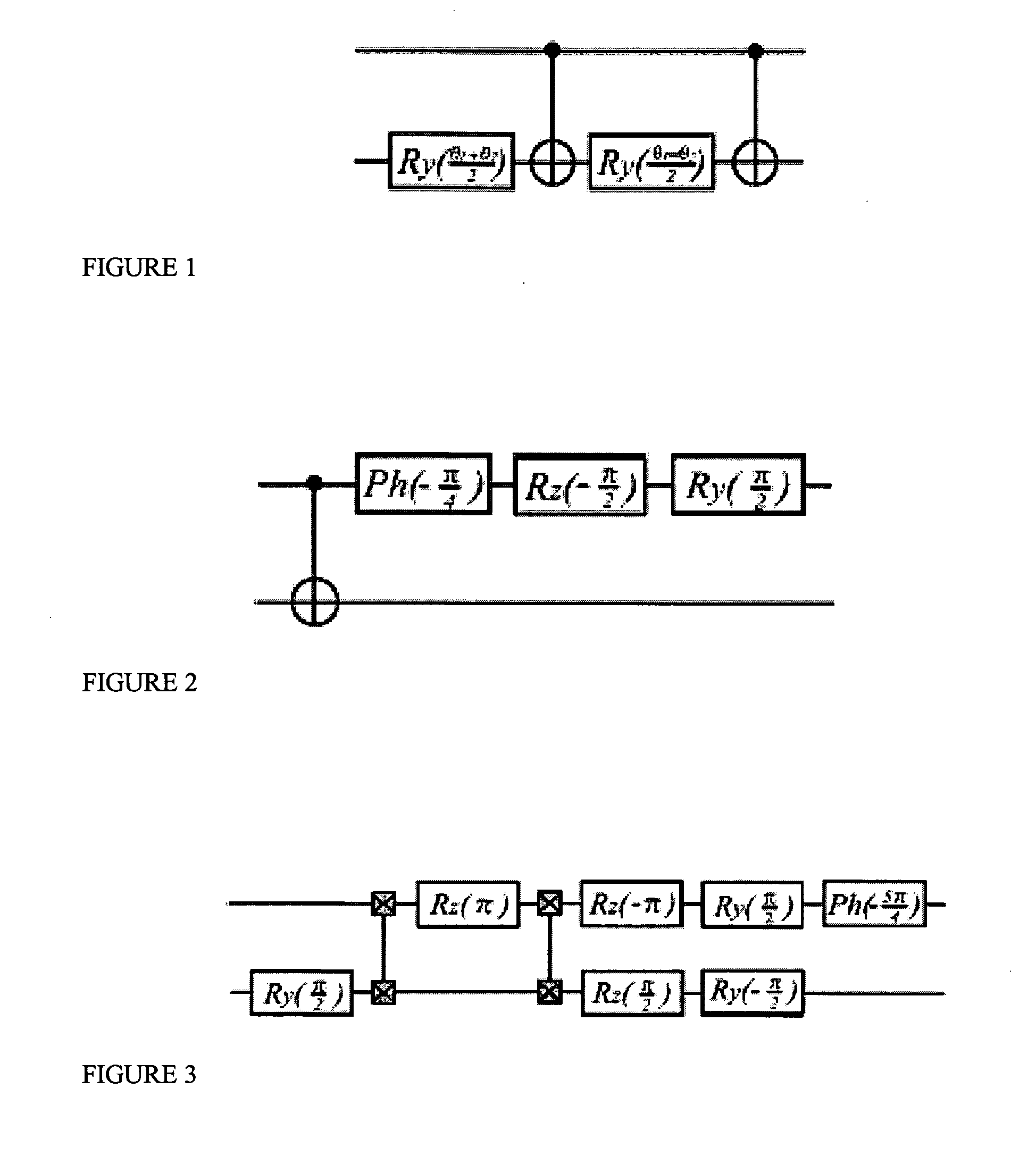Method and apparatus for automated design of quantum circuits
a technology of automatic design and quantum circuits, applied in the field of quantum computing and the automatic generation of circuits, can solve the problems of implementing quantum processes on classical computers only inefficiently, and limiting applications of classical computers
- Summary
- Abstract
- Description
- Claims
- Application Information
AI Technical Summary
Benefits of technology
Problems solved by technology
Method used
Image
Examples
Embodiment Construction
[0046] The embodiments of the present invention are a method and an apparatus for automatic generation of quantum circuits. In the following description, numerous specific details are set forth to provide a more thorough description of embodiments of the invention. It will be apparent, however, to one skilled in the art, that the embodiments of the present invention may be practiced without these specific details. In other instances, well known features have not been described in detail so as not to obscure the invention.
[0047] A quantum algorithm amounts to a specification of a desired unitary transformation to be performed on some set of quantum bits (qubits). To perform this transformation on real quantum computing hardware one needs to break it down into a sequence of manageable steps involving operations on single qubits and, in one embodiment, pairs of qubits at a time. This decomposition is called a quantum circuit decomposition of the associated unitary transformation. Unfo...
PUM
 Login to View More
Login to View More Abstract
Description
Claims
Application Information
 Login to View More
Login to View More - R&D
- Intellectual Property
- Life Sciences
- Materials
- Tech Scout
- Unparalleled Data Quality
- Higher Quality Content
- 60% Fewer Hallucinations
Browse by: Latest US Patents, China's latest patents, Technical Efficacy Thesaurus, Application Domain, Technology Topic, Popular Technical Reports.
© 2025 PatSnap. All rights reserved.Legal|Privacy policy|Modern Slavery Act Transparency Statement|Sitemap|About US| Contact US: help@patsnap.com



